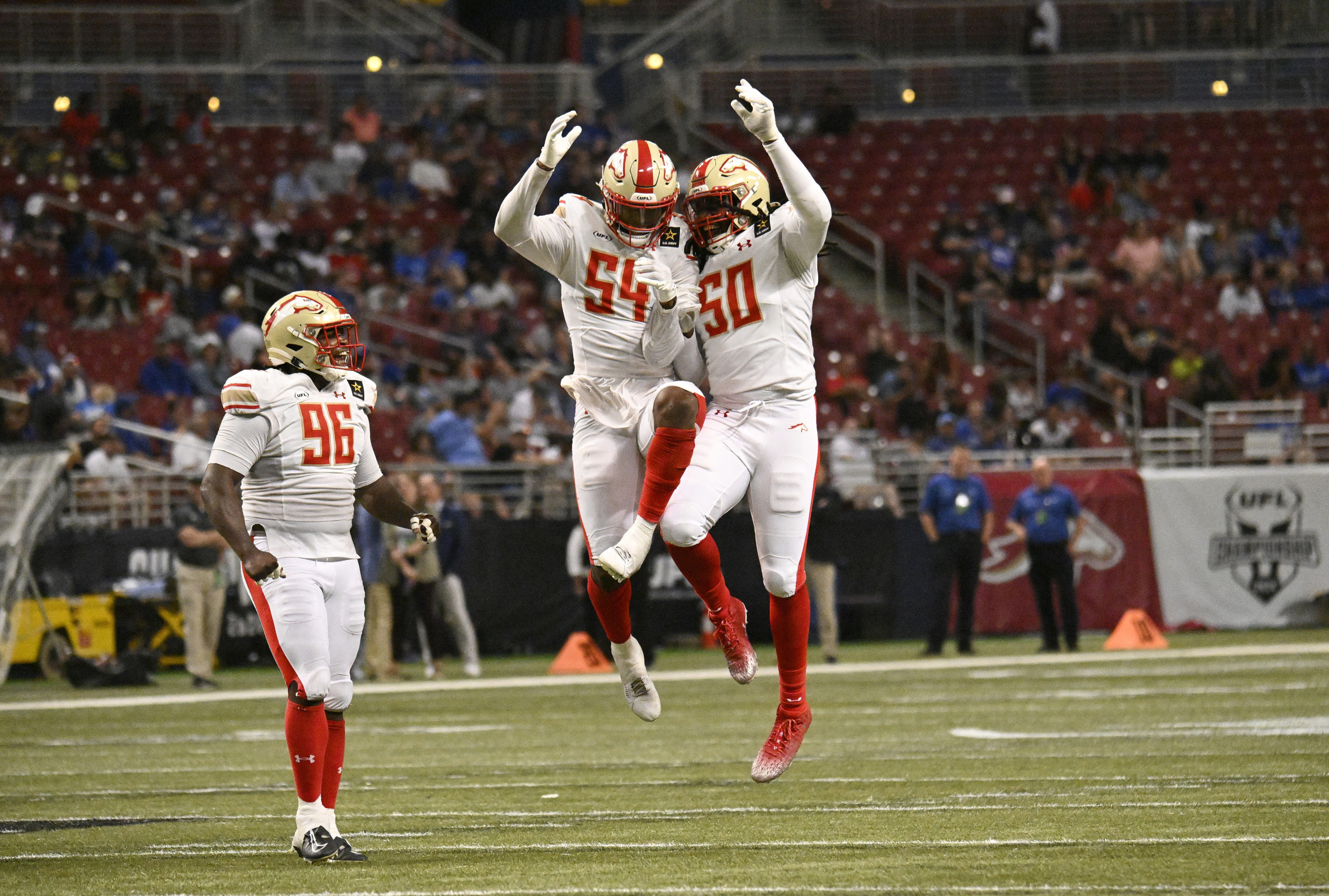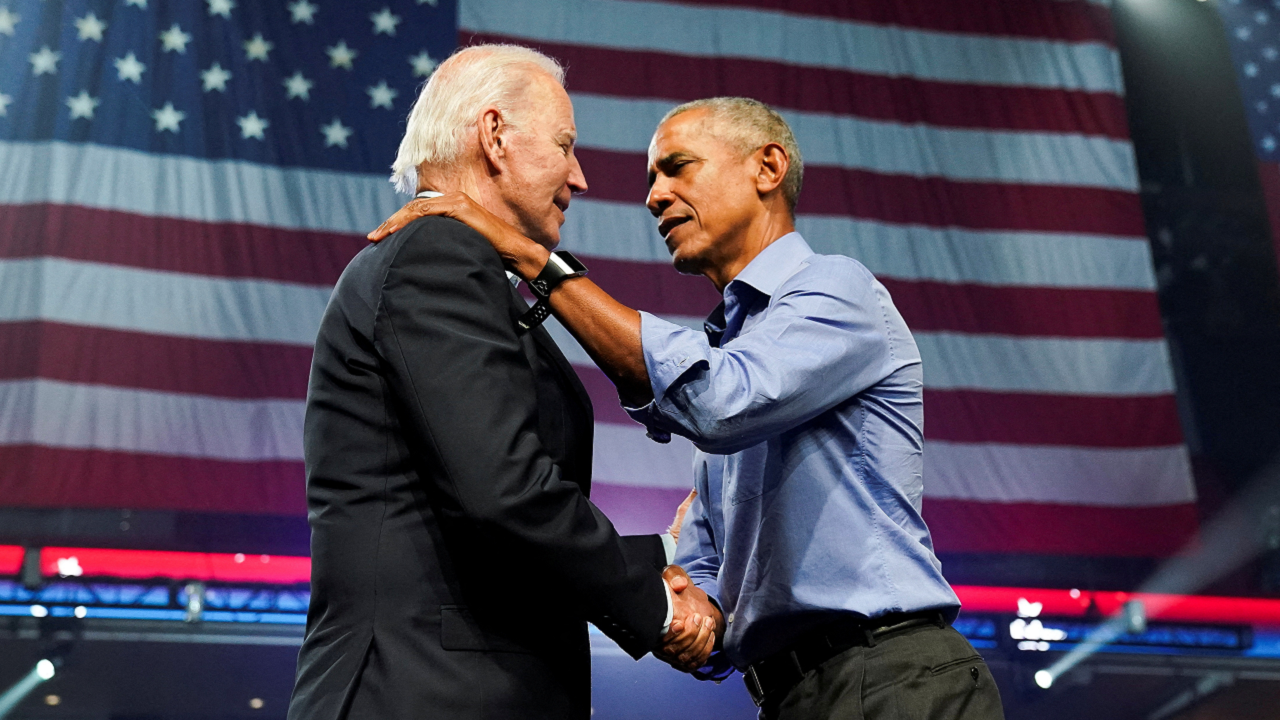World
At 28, Jordan Bardella shakes up French politics: 'People across France have woken up'
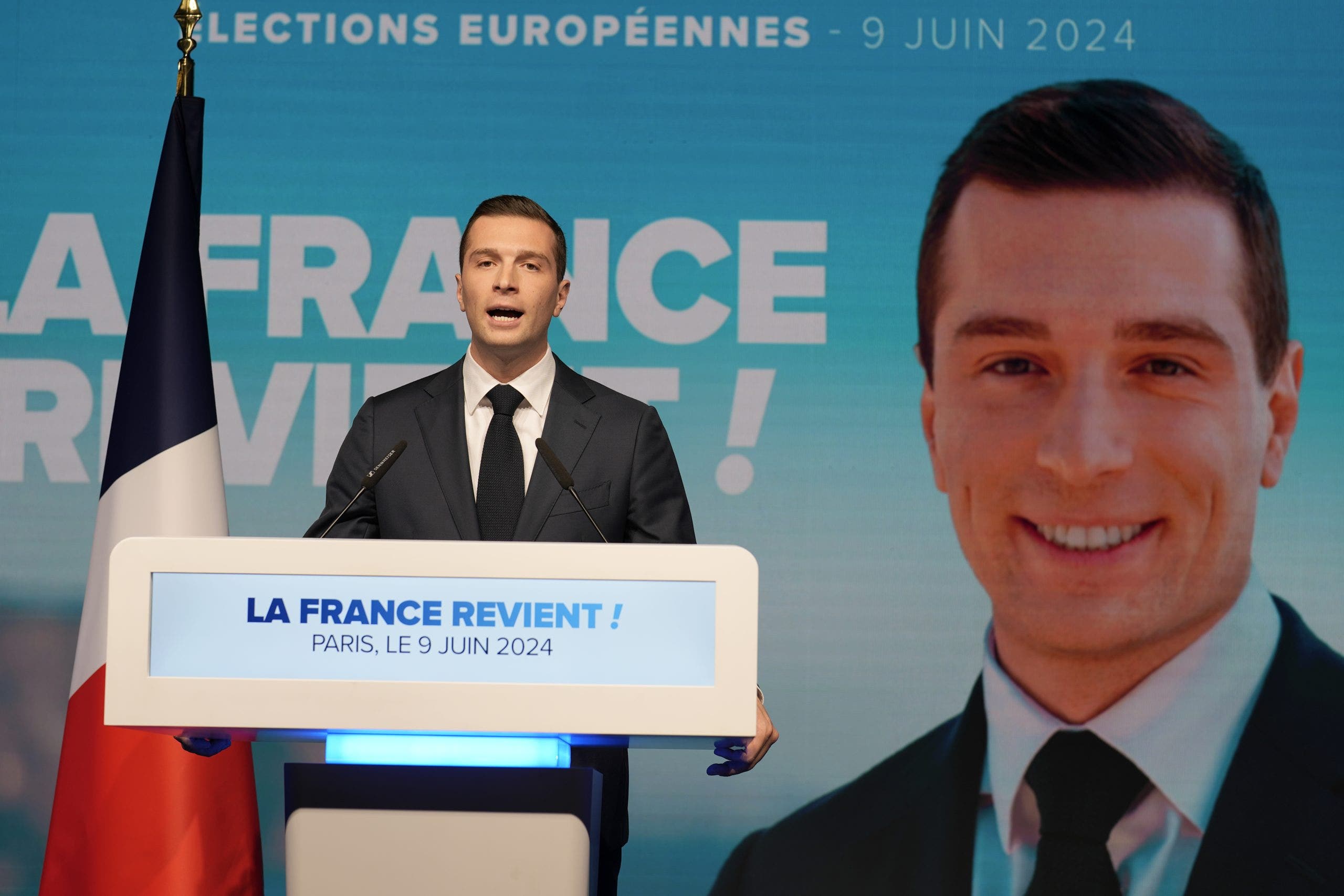
FRANCE — Jordan Bardella is shaking things up in French politics. He’s young. He’s handsome like a male fashion model, and since 2022, he’s been president of the National Rally, the new name for the National Front party founded in 1972 by controversial far-right politician Jean-Marie Le Pen. The party has moved on from its far-right roots, becoming more of a populist party under Le Pen’s daughter, Marine.
“Jordan Bardella, the right-wing 28-year-old without a college degree, could be the French prime minister in a few weeks,” says Thomas Corbett-Dillon, a former adviser to former U.K. Prime Minister Boris Johnson and adviser to other European politicians. “This is great news for the French people that have suffered relentless attacks on their culture by left-wing Macron and the millions of migrants he imported.”
Bardella was born into a family of Italian immigrants and excelled in school before attending the country’s top university, the Sorbonne. However, he dropped out before earning a degree to pursue a career in politics. His parents divorced at an early age, and he was largely brought up by his mother in a working-class neighborhood in the Paris suburbs.
EUROPEAN VOTERS REJECT SOCIALISM, FAR-LEFT POLICIES IN EU PARLIAMENT ELECTIONS: ‘POLITICAL EARTHQUAKE’
Rassemblement National President and electoral list leader Jordan Bardella poses for a selfie with supporters during a campaign rally for the upcoming European elections in Montbeliard, eastern France, March 22, 2024. (Patrick Hertzog/AFP via Getty Images)
The reason Bardella has a chance at being the next French prime minister is due to the country’s electorate swing to the populist right in the European Union elections at the beginning of the month. France led the way with the National Rally snagging 31.5% of the votes, making it the most popular French political block in the election.
That led President Emmanuel Macron to call a snap parliamentary election for the end of the month.
“[Macron] called an urgent election to try and surprise the National Rally party before they were ready,” Corbett-Dillon says. “The people across France have woken up and are sick of the left-wing policies.”
Still, there are other changes that might seem to make Bardella and National Rally more popular to the French. Specifically, Bardella and Marine Le Pen, daughter of Jean-Marie, have a different way of doing things compared to Marine’s father, says French-born Veronique de Rugy, a senior research fellow at the Mercatus Center at George Mason University in Virginia.

Women pose in front of a poster of the head of the Rassemblement National far-right party, Jordan Bardella, during the launching event of the movement “Les Jeunes avec Bardella” (Youth with Bardella) in Paris, Jan. 27, 2024. (Miguel Medina/AFP via Getty Images)
“Jean-Marie’s demeanor was not fitting in with the French elite,” de Rugy says. “When I see Marine and Jordan, they fit very well.”
In addition, neither Bardella nor Madame Le Pen push antisemitic rhetoric as did Mr. Le Pen.
“They are not Jean-Marie,” de Rugy says. She also notes the usual “far right” description of the National Rally isn’t quite accurate. Yes, the party does have an anti-immigrant and protectionist stance on imported goods, which are both far right, she says. But on domestic issues, the party is quite different.
“These guys are more inclined to big government programs,” she says. Such things include the hefty cost of state-funded pensions and other social safety nets.
GERMANY’S CONSERVATIVES FINISH FIRST IN EU ELECTION, AS FAR-RIGHT MOMENTUM SENDS FRANCE’S LEADER SCRAMBLING
Another thing drawing voters to the National Rally is the high unemployment of young people between 15 and 24. Recent data shows that the so-called youth unemployment rate was running at 17.8%, according to data from April. That’s up from 16.8% at the beginning of last year.
That high youth unemployment rate may be due to a lack of education or skills, says Ivo Pezzuto, a Paris-based professor of global economics and competitiveness at the ISM Business School.
“There are a lot of jobs but only for the people with the new skills,” Pezzuto says. “Those most likely to get jobs would include people with digital know-how.”

Marine Le Pen, center, and deputies, including Sebastien Chenu to her left and Jordan Bardella, president of the National Rally, to her right, participate in a march against antisemitism from the Esplanade des Invalides to the Senate Nov. 12, 2023, in Paris. (Antoine Gyori/Corbis/Corbis via Getty Images)
However, Bardella and the National Rally face some huge challenges. First, winning a majority in the French parliament isn’t the most likely outcome, says Mujtaba Rahman, Eurasia Group’s managing director for Europe. Instead, he says the likelihood of a victory is “non-negligible” with a 30% chance of the National Rally winning a majority of the parliamentary seats.
If Bardella beats the odds and gets a parliamentary majority, it still won’t be easy to pursue new policy programs, Rahman says. Part of that block will likely be President Macron, who some say leans a tad to the left. That means there will likely be a clash of policy goals between the president and the prime minister.
“Never have we had a co-habitation of such big ideological differences,” Rahman says.
There’s also the potential for problems with government spending. Notably, as a European Union member, France is obliged to stick to limits on how much of a fiscal deficit it runs as a percentage of GDP. The issue that Rahman sees popping up is Macron trying to constrain spending by Bardella.
“It’s not clear [Macron would] be able to do that,” Rahman says. “I think there would be a period of experimentation and uncertainty resulting in the constitution being tested.”
The result could put France’s finances in the spotlight, and that may already be beginning.
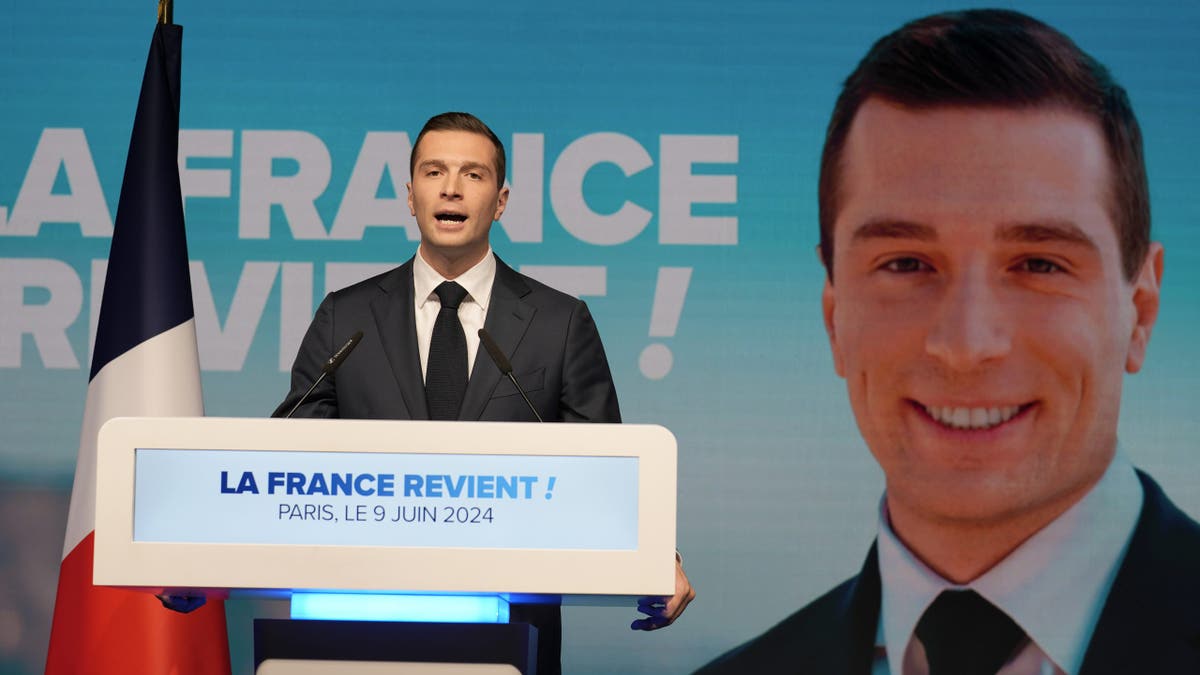
National Rally lead candidate Jordan Bardella delivers a speech at the party election night headquarters June 9, 2024, in Paris. (AP Photo/Lewis Joly)
Investors have shown their concerns over the past few days since Macron called the snap vote. The Paris CAC index (roughly the French equivalent of the Dow Jones index) had subsequently dropped 4% last week. And its finances are stretched. The country had a debt of 111% of its GDP at the end of last year.
And the same year, its deficit rose to 5.5% of GDP. The EU requires member states to run deficits no higher than 3%.
“The new government will have a severe fiscal constraint,” says Marc Chandler, chief market strategist at currency specialist Bannockburn Global Forex. In other words, whoever gets a majority in the French parliament, there won’t be much wiggle room.
Chandler also sees an increased risk of France leaving the EU.
“It’s a tail risk, but the tail has gotten a bit bigger,” he said.

World
Live Updates: Kenyan President Vows to Prevent Violence ‘At Whatever Cost’
President Ruto spoke after demonstrators in Nairobi breached the Parliament to protest the passage of a bill raising taxes on many basics. At least five people were killed, according to Amnesty International and several civic organizations.
World
Ukraine's Zelenskyy replaces military's commander of joint forces
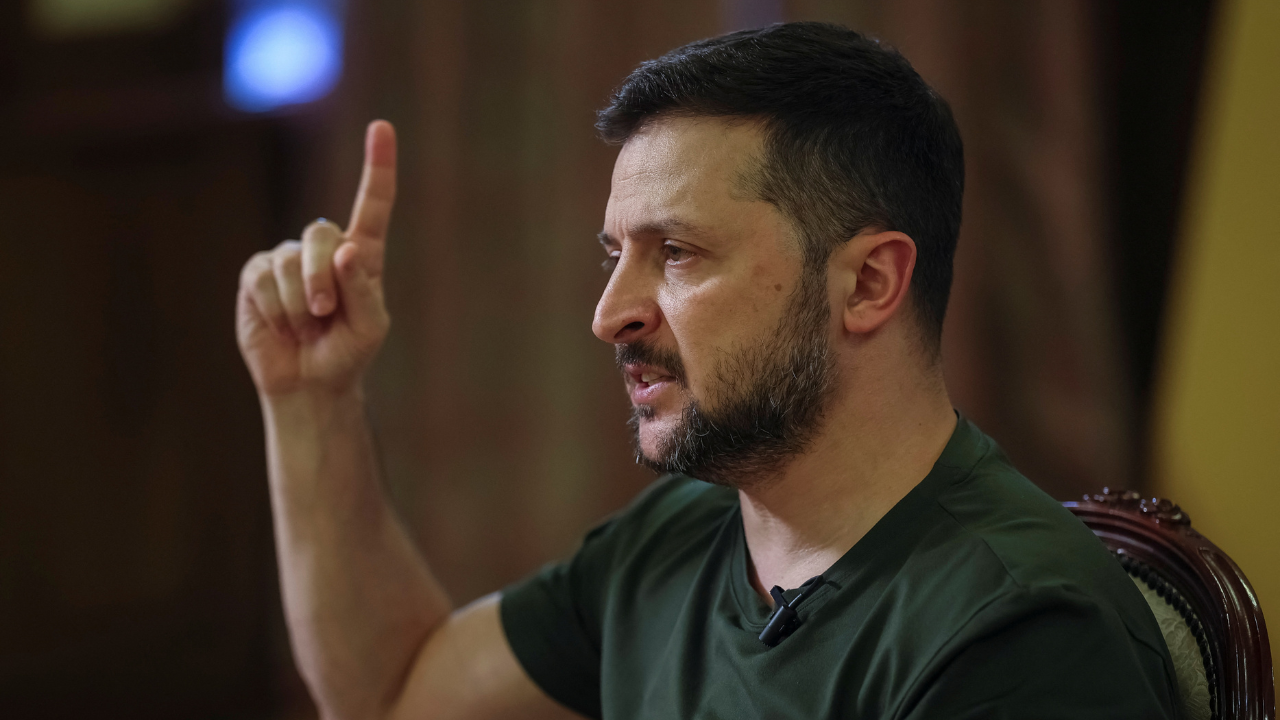
- President Volodymyr Zelenskyy has announced the replacement of Lieutenant-General Yuri Sodol as the commander of the Joint Forces of Ukraine’s Armed Forces.
- Zelenskyy named Brigadier-General Andriy Hnatov as Sodol’s successor, who will handle strategic planning of operations.
- Sodol’s removal followed a letter by Bohdan Krotevych, head of Ukraine’s Azov regiment, accusing Sodol of actions leading to military setbacks.
President Volodymyr Zelenskyy said on Monday he had replaced the commander of the Joint Forces of Ukraine’s Armed Forces, Lieutenant-General Yuri Sodol, after reports surfaced that he had performed badly in the 28-month-old war against Russia.
Zelenskyy, speaking in his nightly video address, gave no reason for the dismissal. He said Sodol had been replaced by Brigadier-General Andriy Hnatov in the post, which involves strategic planning of operations.
Sodol’s removal, one of a series of personnel changes, followed publication of a letter by the head of Ukraine’s revered Azov regiment, Bohdan Krotevych, in which he alleged that Sodol’s actions had led to serious military setbacks.
RUSSIA BLAMES US AFTER UKRAINIAN ATTACK ON CRIMEA LEAVES SEVERAL DEAD, WOUNDED
In a post on the Telegram messaging app, Krotevych did not identify Sodol by name, but said an unnamed general “has killed more Ukrainian soldiers than any Russian general.”
Ukraine’s President Volodymyr Zelenskyy speaks during an interview in Kyiv, Ukraine, on May 20, 2024. Zelenskyy said on Monday he had replaced the commander of the Joint Forces of Ukraine’s Armed Forces, Lieutenant-General Yuri Sodol, after reports surfaced that he had performed badly in the 28-month-old war against Russia. (REUTERS/Gleb Garanich)
“What I do care about is that combat battalion and brigade commanders are put on trial for losing an observation post, but a general is not put on trial for losing regions, dozens of cities and thousands of soldiers,” Krotevych wrote.
“All the military personnel now understand who I am talking about because 99 percent of the military hate him for what he does.”
The news outlet Ukrainska Pravda, citing a leaked report, said a criminal complaint had been submitted concerning Sodol, who was promoted earlier this year, although it did not identify him. It said Krotevych was willing to testify against him.
Hnatov had served as deputy commander of the southern theater of operations since 2022 and played a leading role in recapturing much of southern Kherson region from Russian invaders.
In the spring of 2023, he commanded the defense of Bakhmut in eastern Ukraine, a town that eventually fell to Russian forces after many months of pitched battles.
Krotevych, in a social media post after the president’s announcement, described Hnatov as a “very worthy officer”.
With Russian forces making gains and slowly advancing through eastern Ukraine in recent months, the military has undergone considerable changes.
The military top commander, Valeriy Zaluzhnyi, was dismissed in February after public differences with Zelenskyy over the conduct of the war.
World
A right to drink? Inside the debate to protect US workers against the heat

Dallas, Texas – More than a decade later, Eva Marroquin’s voice still shakes when she talks about it.
The 51-year-old mother of five had been working construction in Austin, Texas, for about five years when she heard that a friend had died of heat exposure at a worksite. It was 2012, and he had been helping to build a bridge at the intersection of two local highways.
“He just couldn’t get to the water in time,” Marroquin said.
The news shook Marroquin, who had experienced her own close calls with the sweltering temperatures that broil the southern United States in the summertime.
After days of painting walls or cleaning up sites, Marroquin’s face would burn red in the heat. Sometimes, she felt feverish and dizzy. Her throat would even close. It left her with haunting thoughts of what her friend must have lived through in his final moments.
“I distinctly remember how that felt, and it made me want to speak up even more,” Marroquin told Al Jazeera.
Marroquin is among the advocates pushing for greater protections for workers facing extreme temperatures in the US.
The US Department of Health and Human Services found that heat-related deaths overall have been on the rise, as climate change drives temperatures to new heights. In 2023, an estimated 2,302 people died from heat-related conditions, up from 1,722 in 2022 and 1,602 in 2021.
But in the US, there are no federal protections specifically designed to protect workers from environmental heat.
Marroquin and other workplace advocates are lobbying to change that — but in the meantime, state and local governments in the US have been duking it out over the authority to protect workers from the stifling heat.
A fight between state and local authority
On July 1, a new law comes into effect in Florida that reflects those tensions.
Last summer was the hottest on record in the state, prompting Miami-Dade County to consider an ordinance that would mandate heat safety training, regular breaks and access to water during high-temperature days.
But Florida Governor Ron DeSantis blocked that attempt, signing a law that instead banned local governments from establishing their own workplace safety requirements for heat exposure.
“There was a lot of concern out of one county, Miami-Dade,” DeSantis told local press at the time, warning that the local ordinance would have caused “a lot of problems”.
Florida was the second state in recent months to pass such a law. In 2023, Texas Governor Greg Abbott also signed what critics called the “Death Star” bill — so named for its ability to destroy local regulations that went beyond existing state mandates.
It, too, prevented municipalities from implementing their own heat safety laws, effectively killing ordinances in areas like Austin and Dallas. Houston and other cities have challenged the law in court.
As in Florida, however, proponents of the law have argued that a patchwork of local regulations would be too cumbersome for companies to navigate. Business groups also warned of “local government overreach”.
“The Texas law is mostly focused on preventing the big municipalities from doing basically anything that might make doing business in Texas inconvenient or location-specific,” said Alison Grinter, a civil rights lawyer in the Dallas metropolitan area.
She explained that the oil and gas industries have long held sway in Texas politics and helped craft the state’s business-friendly reputation. That, in turn, has attracted technology and finance companies to the state as well.
Grinter added that part of the motive for blocking the local ordinances was also political. While the Texas state government is dominated by Republicans, several of its biggest cities — including Houston and Austin — are led by Democrats.
“For culture war purposes, the idea that there are four or five different big oases in the middle of the state that are sanctuaries from all of the reactionary social laws really galls lawmakers,” Grinter said.
Still, only five states have taken it upon themselves to pass heat-exposure protections. They include California, Oregon, Washington, Colorado and Minnesota.
“The Texas government doesn’t want local laws, but they also don’t want a statewide law,” said Ana Gonzalez of the Texas AFL-CIO, a labour union. “So workers are stuck.”

Petitioning the federal government
That gridlock on the state and local level has shifted the battle over workplace protections to the federal government.
The Occupational Safety and Health Administration (OSHA) mandates that employers implement a workplace safety policy, but it does not indicate how that policy must address heat protection.
That may be changing, though. In 2021, OSHA announced it would start to develop a rule to mitigate the risks of heat-related injuries and deaths for workers, and a spokesperson, Kimberly Darby, told Al Jazeera that this month marked an important step forward.
“Last week, OSHA’s proposed rule was sent to the Office of Management and Budget for review,” Darby said. “We are another step closer to giving workers the protections they need and deserve.”
The proposed rule, however, has yet to be published — and its exact contents are therefore unknown. In addition, new OSHA rules can take years to achieve final approval.
So some advocates are looking to another federal body: the Federal Emergency Management Agency or FEMA.
On June 17, 31 organisations — including immigrants’ rights groups, environmental nonprofits and farmworkers unions — petitioned FEMA (PDF) to provide disaster relief funds for extreme heat, as well as areas affected by wildfire smoke.
It is part of a broader effort to convince the federal government to step in for their local counterparts, according to Will Humble, who signed the petition on behalf of the Arizona Public Health Association, a nonprofit.
“Planning for and saving lives is a state and local responsibility,” Humble told Al Jazeera. “But FEMA really should include heat emergencies in their funding. Many county health departments are understaffed.”

‘Not seen as human’
In the absence of strong federal action, activists like Christine Bolaños say that employers are left with all the power to decide how to address extreme heat in the workplace, leaving workers at risk.
According to the Bureau of Labor Statistics (BLS), at least 600 workers died from heat exposure while working from 2005 to 2021. An additional 43 deaths were documented in 2022 alone.
Experts indicate the actual number is likely higher, as heat-related deaths are difficult to track.
A broad swath of the workforce is at risk, too. The bureau estimates that 33 percent of American employees spend time outdoors as part of their everyday work.
Especially vulnerable are foreign-born Latino labourers, including both legal and undocumented immigrants, who represent a disproportionate number of work-related deaths.
Though these workers make up only 8.2 percent of the workforce, they represent 14 percent of on-the-job fatalities. The bureau also noted that Latino workers make up the majority of the construction and agricultural labour, two industries where heat exposure is an acute risk.
Bolaños — a staff member at the Workers Defense Project, a community organisation that fights for the rights of low-wage immigrant construction workers in Texas — said the heightened risks are part of a pattern of exploitation.
“Immigrant workers are especially prone to wage theft and other violations of their rights, and they’re often not aware of their rights,” said Bolaños.
The lack of heat-related protections, she added, was a reflection of how workplaces perceive these employees.
“Sometimes, they’re not seen as human,” Bolaños said. “They are not valued for their humanity, just what they can produce. Employers forget workers need to drink water. They need shade; they need breaks.”

‘The monster is here’
Congressman Greg Casar, a Texas Democrat, believes part of the problem is also scepticism towards climate change itself — and a resistance to addressing its dangers.
“Many of us progressives used to campaign on ‘the climate crisis is coming,’ and we were accused of making up a monster that didn’t exist,” Casar told Al Jazeera.
“Now the monster is here, and the things we’re fighting for have become so basic. We’re arguing over food and housing. We’re arguing over people having the right to a water break.”
Casar has spent years organising demonstrations to showcase the plight of workers — including through “thirst strikes”, where he and others refused to drink for hours, to demonstrate the risks of extreme heat.
At a “thirst strike” last year, Marroquin’s coarse, strong hands clutched a sign that read, “PEOPLE OVER PROFITS”.
Tears flowed from her eyes, which she says have been damaged by the sun and heat. She explained she developed pterygium, a kind of fleshy growth near one of her eyes, from her exposure to hot, dry conditions.
Now, a year later, Marroquin told Al Jazeera she hopes change will come soon. Just this month, she spoke to OSHA about her experience and gave feedback on the forthcoming federal rule.
“It’s really difficult to implement laws about work,” she conceded. “But we have to demand that OSHA implements rules as a whole across construction sites, in the same way they demand scaffolding is built in a certain way.”
But even with a federal standard on the way, advocates and legal experts are wary. Several told Al Jazeera that new OSHA rules are notoriously difficult to pass because of understaffing and a high standard of review, as well as potential legal challenges.
Gonzalez, the advocate from the Texas AFL-CIO, said she was bracing for the mandatory public commenting period for the eventual rule — at which time, she expects corporations to weigh in.
“I’m sure there will be pushback from the state or associations, because the rule will impact all industries,” she said. “But hopefully, this is going to prevent people from dying.”
-

 News1 week ago
News1 week agoJoe Biden, Barack Obama And Jimmy Kimmel Warn Of Another Donald Trump Term; Star-Filled L.A. Fundraiser Expected To Raise At Least $30 Million — Update
-

 News1 week ago
News1 week agoIt's easy to believe young voters could back Trump at young conservative conference
-

 World1 week ago
World1 week agoRussia-Ukraine war: List of key events, day 842
-

 World1 week ago
World1 week agoSwiss summit demands 'territorial integrity' of Ukraine
-

 World1 week ago
World1 week agoProtesters in Brussels march against right-wing ideology
-

 News1 week ago
News1 week agoA fast-moving wildfire spreads north of Los Angeles, forcing evacuations
-

 World1 week ago
World1 week agoAl-Qaeda affiliate claims responsibility for June attack in Burkina Faso
-

 Politics1 week ago
Politics1 week agoJudge rules Missouri abortion ban did not aim to impose lawmakers' religious views on others





